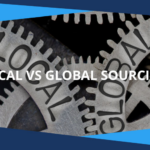Wondering a secret formula to unlock massive discounts with every large order? Thinking of buying bulk so that you can save a few bucks out of it?
Quantity discount is an essential concept when making high volume purchases from Chinese products.
This guide provides a comprehensive approach to the quantity discount, why suppliers should opt for quantity discounts and to calculate it for most accurate cost effective ways to purchase products.
What is a Quantity Discount?
It’s important to avoid being penny wise and pound foolish, when business deals with bulk purchases, the supplier often charges less. The bulk price is the easiest way to evaluate quantity discount, allowing you to pay less per product by choosing more products instead of fewer.

Why does the supplier offer quantity discounts?
The quantity discount is directly related to buyers and sellers. The suppliers sees quantity discounts in number of ways:
- Quantity purchase discounts from the suppliers are used to attract the buyers for bulk purchases and the saying ” the more, the merrier” rings true. Suppliers often provide significant discounts for larger orders. The lower prices for large orders are often enough to encourage buyers to place bulk orders.
- Quantity purchase not only reduces the cost of warehousing but also helps you save a few bucks over logistics. With these cost reductions sales and supplier profits are also decreased. This situation led to better product turnover.
- Supplier building strong relations with customers through purchase discounts, saves on marketing cost and allows for long-term benefits.
- Each supplier strives to find the “sweet spot” price for quantity discounts. This ideal price is the discount grade which convince buyers to buy in larger amounts.
The ultimate goal of BrandNewMD is to find a cost effective purchase amount for you after quantity analysis. In business joint success is important whether it is the businessman or the supplier. As we streamline your business goal with the ideal sourcing agent, our job is to do what is best in the interests of both parties.
Quantity discount analysis

According to a 2023 report by Alibaba, businesses that adopt quantity discount strategies reduce an average of 15% on their total purchasing costs.
The supplier’s price break is a cost effective option which lowers the buyer’s product cost by ordering bulk purchases. However, buyers are required to check on quantity discounts analysis to wisely attain the maximum discount available. Without proper quantity analysis, purchase cost may increase.
If you are still confused about quantity discount analysis and its features, you can contact us directly so we can clear up any confusion you may have.
Within the limit of the stepped price list, there is no simple relationship between the buyer’s total purchase cost and the product quantity. When the purchase quantity is exceeded to a certain threshold the purchase cost will automatically surge. The buyer may pay more and get less product.
Quantity Discount Example
A study by McKinsey & Company in 2022 revealed that companies opting for bulk purchases saw a 20% improvement in their profit margins due to reduced logistic and warehousing expenses.
The bulk price is the easiest way to evaluate quantity discounts, allowing you to pay less per product by choosing more products instead of fewer.
Magic Formula for Quantity Discount
Most buyers don’t know the magic formula suitable for determining the ideal quantity when they get suppliers’ quotations. This blog will help you wave the magic wand with the secret of the magic formula.
To find the most cost-effective purchasing quantity, use the following formula:
Total Cost = Unit Price × Quantity Purchased × (1−Discount Rate)
- Total Cost: Final amount paid.
- Unit Price: Cost per individual item.
- Quantity Purchased: Number of items bought.
- Discount Rate: Percentage reduction on price.
- Formula: Computes cost after applying discounts.
The quantity discount formula is used to determine the price per unit when a buyer purchases a large quantity of items, often resulting in a lower price per unit. Here’s a general formula to calculate the total cost after applying a quantity discount:
For example, consider a supplier’s discount quotation:
- 1-99 units: $7.00 each
- 100-499 units: $6.50 each
- 500-999 units: $6.00 each
- 1000-4999 units: $5.50 each
- 5000 and up: $5.00 each
If you need 930 units, you might calculate the cost as:
930 units x $6.00/unit = $5,580.00
However, a savvy purchasing agent would notice that buying 1,000 units at $5.50 each costs $5,500.00, saving $80 and gaining 70 extra units.
By using the magic formula, you can determine the most cost-effective quantity to purchase, ensuring maximum savings.
Key Takeaway
Within the limits of a stepped price list, there is an upper limit for volume pricing where the buyer’s interest lies—this is where the buyer’s sweet spot is hidden. Buyers should ensure that the number of products they purchase is below this threshold. If buyers want to purchase quantities above this threshold, it will be more cost-efficient to buy the product in the next range of the threshold.








